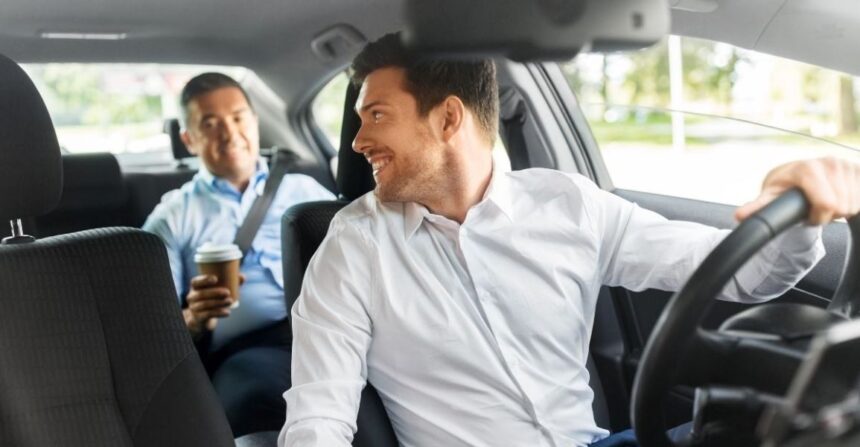Rideshare drivers face a unique challenge on the road—balancing customer service with safe driving. Unlike taxi drivers, who often have partitions and clear rules about passenger interactions, rideshare drivers frequently engage in conversations, assist with route changes, and accommodate passenger requests in real-time. While friendly interaction enhances the customer experience, it can also create dangerous distractions that increase the risk of accidents.
Rideshare apps like Uber and Lyft play a significant role in promoting driver safety. Implementing features that reduce distractions and provide clear guidelines for both drivers and passengers helps create a safer rideshare experience. When distractions contribute to an accident, victims may have legal options to seek compensation. Speaking with an Austin Lyft accident attorney can help determine liability and the best path forward for injured passengers or other drivers affected.
The Most Common Passenger Distractions for Rideshare Drivers
Rideshare drivers must navigate busy streets while managing passenger interactions, which can lead to various distractions, including:
- Conversations – Engaging in lengthy or emotional discussions that take a driver’s focus off the road.
- Route Adjustments – Passengers requesting last-minute changes, requiring drivers to check maps or reroute mid-trip.
- Mobile Device Use – Drivers relying on navigation apps while passengers may show them additional route suggestions or points of interest.
- Loud or Rowdy Behavior – Passengers playing music, talking loudly, or engaging in disruptive behavior that makes it harder for the driver to concentrate.
- Unnecessary Requests – Passengers asking the driver to look at their phone, reach for items, or adjust in-car settings while driving.
Each of these distractions can delay reaction times and increase the likelihood of a collision. Rideshare apps can help mitigate these risks through better in-app safety features and policies.
In-App Features That Can Help Reduce Distractions
Rideshare companies have the power to integrate safety features that help drivers stay focused. Some existing and potential solutions include:
- Hands-Free Voice Navigation – Apps should encourage drivers to use voice-activated navigation to avoid checking their phone while driving.
- Pre-Set Route Confirmations – Allowing passengers to confirm and lock in their routes before the ride begins helps minimize last-minute changes that force drivers to check their phones.
- Driver Mode for Reduced Notifications – Enabling a distraction-free driving mode that silences non-essential app notifications while a ride is in progress.
- Passenger Etiquette Reminders – Reminding riders about safety guidelines, including limiting unnecessary distractions for drivers.
Implementing these features allows rideshare apps to create a safer driving environment and helps drivers maintain full attention on the road.
How Passenger Ratings Affect Driver Focus
Many rideshare drivers feel pressured to engage in conversations or accommodate passenger requests to maintain high ratings. Since driver scores impact their ability to receive future rides, some may prioritize customer satisfaction over safety.
A system that reassures drivers they won’t be penalized for prioritizing safe driving could reduce distractions. Rideshare platforms should:
- Educate passengers on the importance of allowing drivers to focus on the road.
- Prevent negative ratings based on limited conversation or refusal to engage in distractions.
- Encourage safety-first policies that give drivers confidence in maintaining focus over unnecessary engagement.
When drivers feel empowered to prioritize safety, they can reduce interactions that might put themselves and their passengers at risk.
The Role of Rideshare Companies in Promoting Safety
Uber and Lyft promote their services as convenient and reliable, but they also have a responsibility to ensure that drivers and passengers remain safe. Companies should develop policies that:
- Clearly outline expectations for passenger behavior in rideshare vehicles.
- Provide driver training on managing distractions effectively.
- Equip vehicles with in-app alerts reminding both drivers and passengers to prioritize safety.
Ensuring that drivers are fully supported in maintaining a distraction-free environment can lead to fewer rideshare-related accidents.
The Consequences of Distracted Driving in Rideshare Vehicles
When a rideshare driver becomes distracted, the consequences can be severe. Accidents caused by inattention often result in serious injuries for passengers, other motorists, cyclists, and pedestrians. Common injuries include:
- Whiplash and neck injuries due to sudden stops or rear-end collisions.
- Traumatic brain injuries from forceful impacts.
- Broken bones and fractures from crashes at high speeds.
- Soft tissue damage leading to chronic pain.
In cases where a rideshare driver’s distraction leads to an accident, victims may have the right to pursue compensation for medical bills, lost wages, and pain and suffering.
Legal Options for Rideshare Passengers Injured Due to Driver Distractions
Passengers who are injured in rideshare-related accidents may be entitled to compensation through Uber or Lyft’s insurance policies. However, obtaining a fair settlement can be difficult, as rideshare companies and insurers may attempt to downplay the driver’s responsibility.
Working with a Lyft accident attorney ensures that accident victims receive fair compensation. An attorney can:
- Gather evidence, including trip data, witness statements, and dashcam footage.
- Determine whether the driver was distracted at the time of the crash.
- Negotiate with rideshare company insurers to secure fair compensation.
- Hold negligent drivers accountable for unsafe driving behavior.
If a rideshare driver was distracted due to unnecessary passenger interactions, both the driver and the rideshare company may share liability for the accident.
How Rideshare Apps Can Improve Safety Moving Forward
As the rideshare industry continues to evolve, companies have an opportunity to enhance driver and passenger safety through better technology, policy updates, and awareness campaigns. Key improvements could include:
- Stronger Training Programs – Teaching drivers how to handle passenger distractions and emphasizing safety-first driving.
- Incentives for Safe Driving – Rewarding drivers who follow safety protocols and maintain low incident rates.
- Passenger Accountability Measures – Holding passengers responsible for excessive distractions and providing clear guidelines on appropriate in-car behavior.
Rideshare apps have the tools to make meaningful safety improvements that benefit both drivers and passengers.
Prioritizing Safety for a Better Rideshare Experience
Passenger conversations and requests can become a major distraction for rideshare drivers, increasing the risk of accidents. Rideshare companies must take proactive steps to reduce distractions through app features, policy updates, and better driver support.
For passengers injured in rideshare-related accidents, legal options are available to pursue compensation. Consulting with an experienced Lyft accident attorney can help victims understand their rights and hold negligent parties accountable. Promoting safety-first practices allows rideshare companies to create a better and more secure experience for everyone on the road.




